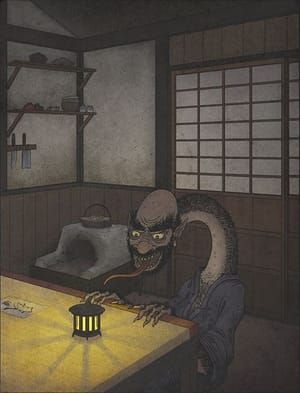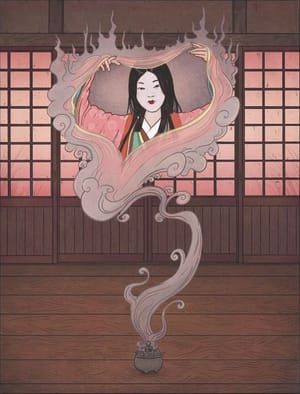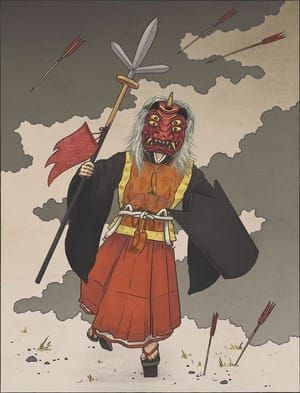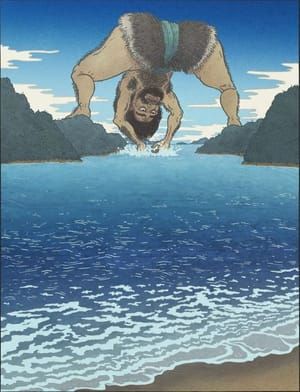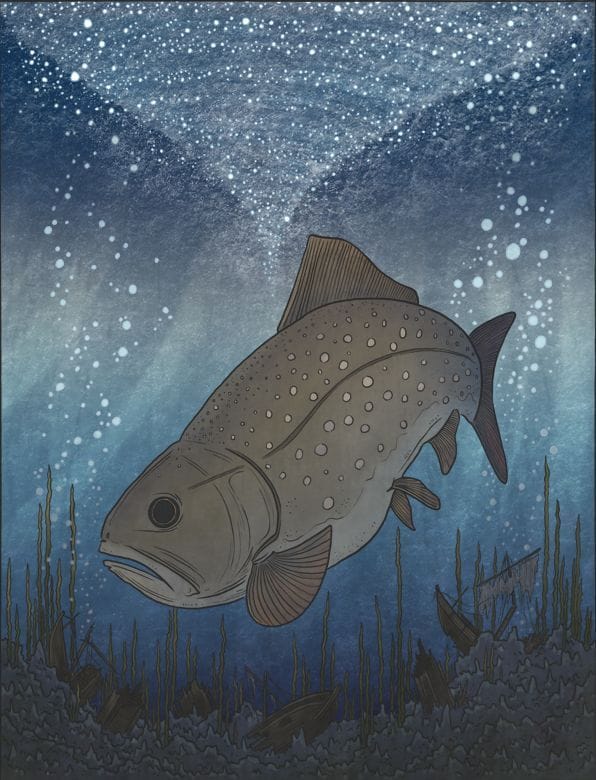

Amemasu, 2016
Matthew Meyer
雨鱒
Amemasu is the Japanese name for the white-spotted char (Salvelinus leucomaenis leucomaenis), a species of trout which is found in Northeast Asia. They are a popular target of game fishing and are also raised in fisheries.
Amemasu spend most of their lives in the water, away from humans. They are found mostly in rivers and streams, but seagoing varieties exist as well. They are more common in Hokkaido, the northern parts of Honshu, and along the Sea of Japan—however legends of amemasu are occasionally found in the southern parts of Japan as well. They feed on whatever they can eat—from plankton to insects, to fish and any other aquatic lifeforms they can fit into their mouths. Yōkai amemasu can grow to colossal sizes, sometimes spanning an entire lake from head to tail. These giant amemasu also occasionally thrash and sink ships, devouring any poor souls who happened to be on the ship. In Ainu folklore, the wild thrashing of giant amemasu is believed to be what causes earthquakes—much like giant catfish are thought to cause earthquakes in the rest of Japan.
Amemasu can transform into human shape and walk about on land. They usually take the form of young, beautiful women in order to seduce young men. Shape-changed amemasu can be identified by their skin, which feels cold and clammy like that of a fish.
A number of lakes in Hokkaido are believed to be the home of giant amemasu. According to Ainu folklore, these amemasu are thought to be the guardian deities of their respective lakes. Lake Mashū is home to an amemasu the size of a whale. Lake Shikotsu contains an amemasu so large that its head touches one end of the lake and its tail touches the other.
A legend from Minabe, Wakayama Prefecture tells of a mysterious whirlpool that appeared in a deep pond. A giant amemasu lived in the pond. Every spring, she would emerge from the pond in the form of a beautiful woman. For two or three days she would catch young men and take them away—where to nobody knows, but they were never seen again. The only way to know that it was a fish and not a woman was from her cold, clammy skin. One day, a cormorant dove into the pond to go hunting. The giant amemasu swallowed the bird in a single gulp. However, after a short time, the amemasu’s body floated up to the surface of the pond, dead. The cormorant burst out of its stomach. A shrine was built at that spot to honor Konpira-san, which still stands today.
Matthew Meyer
artistArthur
Wait what?





